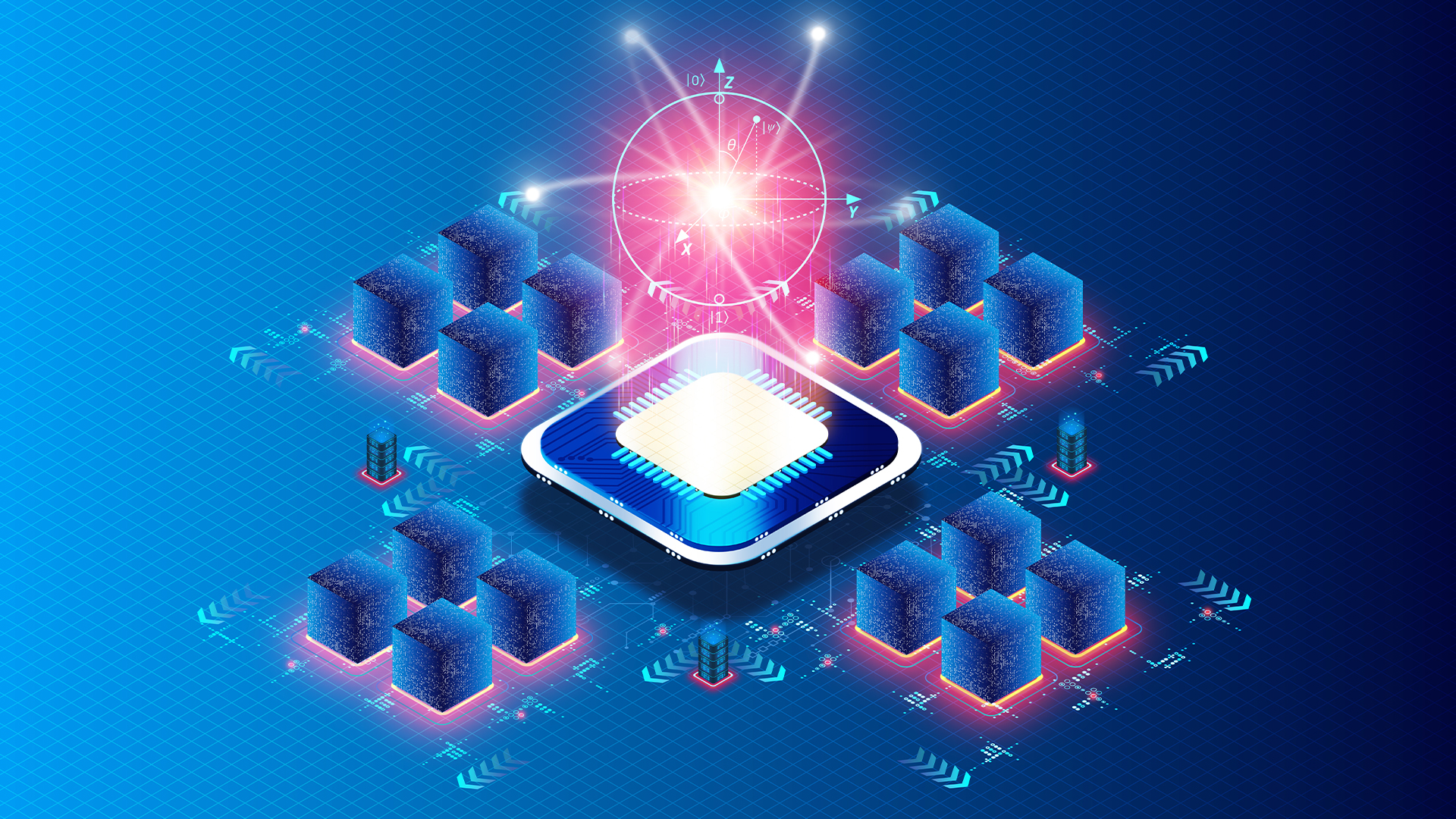
Quantum bits, or qubits, made from electrons floating on top of liquid helium could one day power the next generation of quantum computers, according to a new study.
While the bits that power classical computers encode data as either 0 or 1, qubits can be a superposition of these two states — meaning they can occupy both in parallel while processing calculations. Computers built this way can one day be much more powerful than today’s fastest supercomputers — and promise to be transformative in several fields including drug discovery and tackling climate change.
Qubits are normally made by manipulating the spin state of an electron between its spin-up and spin-down positions, which represent 1 and 0.
Other particles used as qubits include trapped ions, photons, artificial or real atoms and quasiparticles, according to Microsoft, and most qubits achieve a superposition by cooling a superconducting metal (which contains the particle) to absolute zero.
But in a study published Nov. 9 in the journal Physical Review Applied, scientists argue this conventional approach to building a qubit is challenging. That's because combining electrons and solid-state crystals (including metals) creates impurities in the material. This means qubits aren't uniform and, in turn, this leads to a higher chance of qubits failing during calculations.
Related: How could this new type of room-temperature qubit usher in the next phase of quantum computing?
These defects can cause several issues, including “unpredictable electrical potential” and difficulty producing “many uniform qubits,” the scientists said in a statement. It also means that scaling up the number of qubits in a quantum system will amplify the error rate.
This led the scientists to propose a blueprint for a new type of qubit that is theoretically free from such errors. They believe that making electrons float in a vacuum above a pool of liquid helium would not introduce any defects into the system. This means far fewer qubits would be needed in a future quantum computer to achieve quantum supremacy — where the power of a quantum computer surpasses a classical computer — because you don't need to account for a high qubit failure rate.
“Solid-state crystals will always have some defects, which means we cannot create a perfect environment for electrons,” said lead author of the paper, Erika Kawakami, a physicist working at the RIKEN Center for Quantum Computing in Japan, in the statement. “That is problematic if we want to create a lot of uniform qubits. And so it's better to have qubits in [a] vacuum."
Building on past research
This approach to qubits isn’t new. In 1999, scientists proposed a physical system in which floating electrons formed qubits in a vacuum not far from the surface of liquid helium.
But because quantum computing research was only in its early stages, this research spanned just quantum gates — an essential but basic component of quantum mathematical operations that is made up of a small collection of qubits. Quantum gates are the foundation of quantum circuits and are predominantly used for creating quantum algorithms.
Over the last few years, quantum computing research has advanced greatly, leading Kawakami and her colleagues to expand on this previous research with a new theory in which a hybrid qubit is formed from two distinct states of floating electrons. The "charge state" uses an electric field to easy manipulate the electron over moderate distances with an electric field, while the "spin state" can be used to store data stably. Data is transferred between these two properties thanks to the interaction between these two states.
They’ve proposed a system that traps electrons on top of liquid helium using myriad small ferromagnetic pillars, allowing over 10 million qubits to fit into a postage stamp-sized area. In the next stage of this research, the scientists hope to test their theories by conducting a practical experiment with a prototype.
"We've proposed how to realize one-qubit and two-qubit gates using electrons on helium and estimated their fidelities," Kawakami added. "We've also specified how we can scale up the number of qubits. That is something new."







